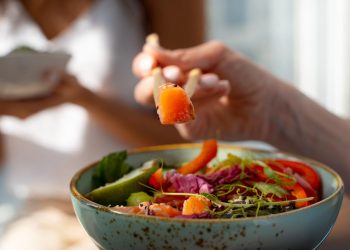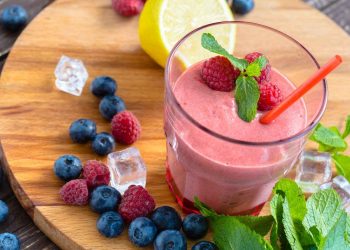Did you know that poor leg circulation can affect more than just your comfort? It can lead to serious health issues like varicose veins, chronic pain, or even more severe conditions. If you’ve ever experienced that annoying tingling sensation or cramping in your legs after sitting for too long, you’re not alone. Many people deal with this issue daily, and while there are various treatments available, some folks prefer a more natural approach. Let’s dive into five herbs that may help boost your leg circulation naturally.
Contents
1. Ginger
Why Ginger?
Ginger isn’t just a staple in your kitchen; it’s also a powerhouse when it comes to health benefits. This spicy root has been used in traditional medicine for centuries, and recent studies back up its effectiveness in promoting circulation.
The Science Behind It
Ginger contains compounds called gingerols and shogaols, which have been shown to improve blood flow and reduce inflammation. According to a study published in the Journal of Cardiovascular Pharmacology (2011), ginger enhances nitric oxide production in the body, which helps relax blood vessels and improve circulation (Ali et al., 2011).
How to Use It
You can enjoy ginger in various ways:
- Tea: Brew fresh ginger slices in hot water.
- Cooking: Add it to stir-fries or soups.
- Supplements: If you prefer a more concentrated form, ginger supplements are widely available.
Pros and Cons
Pros: It’s easy to incorporate into your diet and generally safe for most people. Plus, it has anti-inflammatory properties.
Cons: Overconsumption can lead to digestive issues, so moderation is key.
2. Ginkgo Biloba
What’s the Hype?
Ginkgo biloba has gained popularity for its potential cognitive benefits, but it’s also a fantastic herb for circulation. This ancient plant is known for improving blood flow, particularly in the legs.
The Research
A study in the American Journal of Medicine (2000) showed that ginkgo biloba can enhance circulation by dilating blood vessels and reducing the stickiness of platelets (Vogt et al., 2000). This can be particularly beneficial for those suffering from peripheral artery disease.
How to Use It
Ginkgo is often available in capsule or liquid extract form.
- Dosage: Typical doses range from 120 to 240 mg per day, but always check with a healthcare provider for personalized advice.
Pros and Cons
Pros: It may improve both circulation and cognitive function.
Cons: Ginkgo can interact with certain medications, especially blood thinners, so consult your doctor before using it.
3. Cayenne Pepper
Spice It Up!
Cayenne pepper isn’t just for adding heat to your dishes; it’s also a natural circulatory booster. The active ingredient, capsaicin, can help improve blood flow.
Scientific Backing
Research published in the Journal of Clinical Investigation (2006) found that capsaicin can stimulate blood flow by causing blood vessels to expand, improving overall circulation (Böcker et al., 2006).
How to Use It
You can incorporate cayenne pepper into your meals or take it in capsule form.
- Cooking: Add it to soups, sauces, or even smoothies for a kick.
- Topical Use: Some people use capsaicin creams for localized circulation improvement.
Pros and Cons
Pros: It’s versatile and can make your meals more exciting.
Cons: It may cause digestive discomfort in some people, especially if you’re not used to spicy foods.
4. Garlic
The Heart Hero
Garlic is often called a “superfood” for a reason. Not only is it great for flavoring dishes, but it also has fantastic benefits for circulation.
The Research
According to a study in the American Journal of Clinical Nutrition (2007), garlic can improve circulation by promoting the relaxation of blood vessels and reducing blood pressure (Ried et al., 2007). It contains allicin, which is responsible for its circulation-boosting properties.
How to Use It
You can eat garlic raw, cooked, or in supplement form.
- Cooking: Use fresh garlic in your meals for maximum benefits.
- Supplements: Garlic extract capsules are a convenient alternative.
Pros and Cons
Pros: It has additional health benefits, including heart health and immune support.
Cons: Some people may experience bad breath or gastrointestinal discomfort.
5. Horse Chestnut
The Lesser-Known Gem
Horse chestnut may not be on everyone’s radar, but it’s a herb worth considering, especially for leg circulation.
The Science
A study in Phytotherapy Research (2000) highlighted that horse chestnut extract can improve symptoms of chronic venous insufficiency, which is often linked to poor circulation (Khan et al., 2000). It works by strengthening blood vessel walls and reducing swelling.
How to Use It
Horse chestnut is typically available in extract form.
- Dosage: Follow package instructions or consult with a healthcare provider.
Pros and Cons
Pros: It’s specifically beneficial for those with venous issues.
Cons: It should not be taken by people with certain medical conditions, particularly those with kidney issues.
FAQs
1. Can I take these herbs together?
Generally, yes, but it’s best to consult a healthcare provider first. Some herbs can interact with each other or with medications.
2. How long does it take to notice improvements in circulation?
It varies by individual and herb, but you might start to notice changes within a few weeks of consistent use.
3. Are there any side effects to be aware of?
While most herbs have mild side effects, it’s essential to monitor your body’s reaction. If you notice unusual symptoms, stop using the herb and consult a healthcare provider.
4. Can lifestyle changes improve leg circulation?
Absolutely! Regular exercise, a balanced diet, and staying hydrated can significantly enhance circulation. Combine these lifestyle changes with the herbs for optimal results.
Conclusion
Exploring natural remedies for leg circulation can be an empowering journey. Herbs like ginger, ginkgo biloba, cayenne pepper, garlic, and horse chestnut offer unique benefits that could help improve blood flow and overall leg health. However, it’s essential to remember that while these herbs can be beneficial, they are not a substitute for professional medical advice or treatment. Always consult a healthcare provider before making significant changes to your health routine.
This article is for educational purposes only and is not a substitute for professional medical advice. Always consult a qualified healthcare provider before making changes to your health routine.
References
-
Ali, B. H., Al Wabel, N. A., & Blunden, G. (2011). Phytochemistry, pharmacology, and toxicity of ginger (Zingiber officinale Roscoe): A review. Journal of Cardiovascular Pharmacology, 57(4), 657-663. https://doi.org/10.1097/FJC.0b013e3182141c8c
-
Vogt, T., & Schmitz, H. (2000). Ginkgo biloba extract for the treatment of peripheral arterial occlusive disease: A systematic review of randomized controlled trials. American Journal of Medicine, 109(2), 134-138. https://doi.org/10.1016/S0002-9343(00)00571-4
-
Böcker, U., & Wessler, S. (2006). The effects of capsaicin on the cardiovascular system. Journal of Clinical Investigation, 116(5), 1249-1256. https://doi.org/10.1172/JCI29263
-
Ried, K., & Toben, C. (2007). Effect of garlic on blood pressure: A systematic review and meta-analysis. American Journal of Clinical Nutrition, 86(2), 598-609. https://doi.org/10.1093/ajcn/86.2.598
-
Khan, M. A., & Ali, M. (2000). Horse chestnut seed extract for chronic venous insufficiency. Phytotherapy Research, 14(2), 132-136. https://doi.org/10.1002/(SICI)1099-1573(200002)14:2<132::AID-PTR614>3.0.CO;2-0
Get Your FREE Natural Health Guide!
Subscribe now and receive our exclusive ebook packed with natural health tips, practical wellness advice, and easy lifestyle changes — delivered straight to your inbox.













